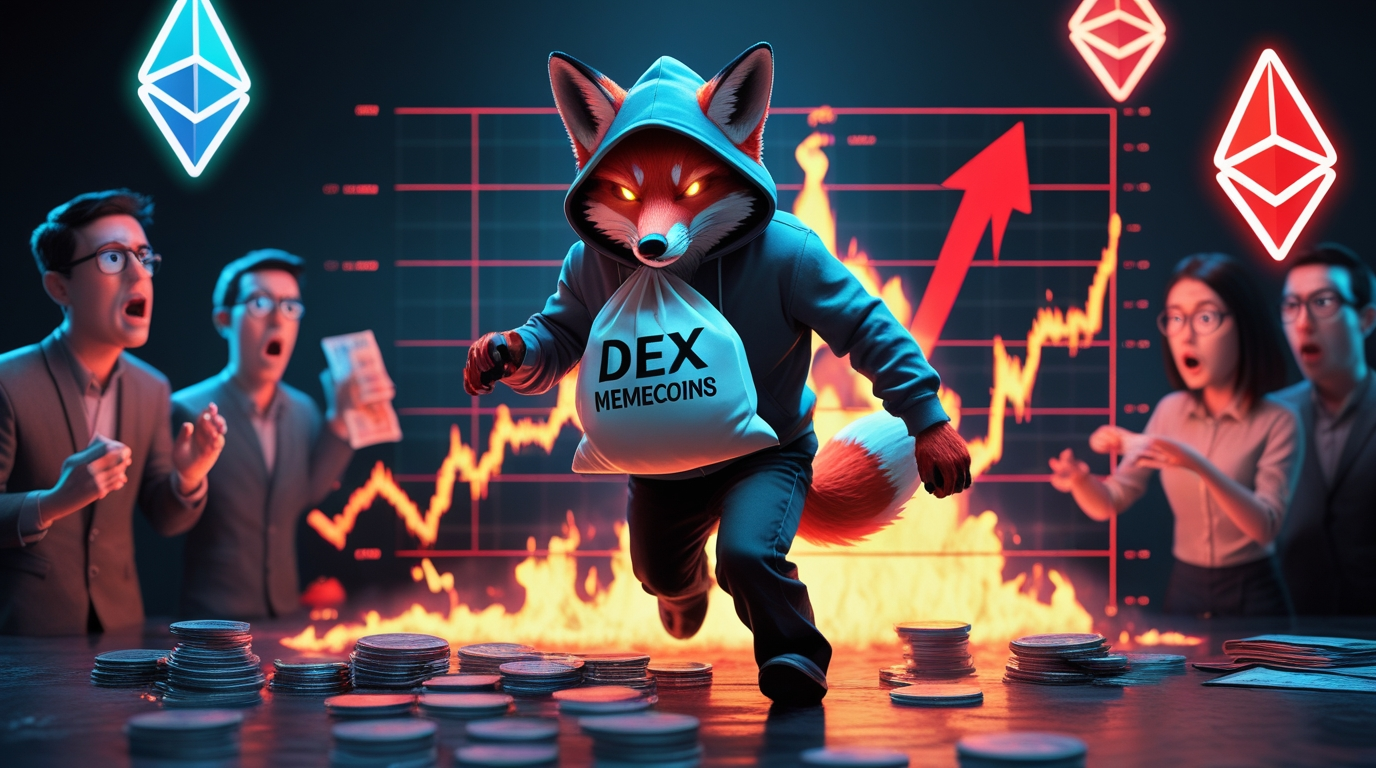The decentralized finance (DeFi) space has seen explosive growth in recent years, with decentralized exchanges (DEXs) like Uniswap, PancakeSwap, and SushiSwap enabling anyone to create and trade tokens with ease. While this has led to legitimate innovation, it has also given rise to a wave of memecoins often promoted as the "next big thing" but frequently ending up as exit scams, rug pulls, or pump-and-dump schemes.

In this article, we’ll explore:
- What Dex memecoins are
- How scams in this space operate
- Red flags to watch out for
- How to protect yourself
What Are Dex Memecoins?
Memecoins are cryptocurrencies inspired by internet jokes, memes, or viral trends. Unlike established cryptocurrencies like Bitcoin or Ethereum, most memecoins have no real utility their value is driven purely by hype and speculation.
Dex memecoins are created on decentralized exchanges (DEXs) because:
✅ No approval needed – Anyone can launch a token in minutes.
✅ Low cost – Creating a token can cost less than $100.
✅ Anonymity – Developers can stay hidden, making scams easier.
Popular examples include Dogecoin ($DOGE ), Shiba Inu ($SHIB ), and newer tokens like Pepe ($PEPE ). While some gain legitimacy, most are short-lived scams.
How Dex Memecoin Scams Work
1. Rug Pulls (The Most Common Scam)
- Developers create a token, hype it up on social media (Twitter, Telegram, TikTok).
- Investors buy in, driving the price up.
- The creators suddenly withdraw all liquidity, making the token worthless.
- Scammers disappear with investors’ money.
Example: In 2021, the Squid Game token (SQUID) skyrocketed before the developers pulled liquidity, stealing millions.
2. Pump-and-Dump Schemes
- A group (often influencers) buys a memecoin early.
- They promote it aggressively, causing a price surge.
- Once retail investors FOMO in, the insiders sell, crashing the price.
3. Honeypot Scams
- A token is coded so that you can buy but not sell.
- Investors see the price rising but can’t exit their positions.
- The developers then drain the funds.
4. Fake "Viral" Projects
- Scammers clone legitimate projects (e.g., fake Pepe 2.0, Wojak 2.0).
- They use similar names and logos to trick investors.
- Once money flows in, they abandon the project.
Red Flags of a Dex Memecoin Scam
🚩 Anonymous team – No doxxed (publicly known) developers.
🚩 Unrealistic promises – "1000x guaranteed returns!"
🚩 Locked liquidity? – If liquidity isn’t locked, devs can steal funds.
🚩 No utility – Just a meme, no real use case.
🚩 Sudden influencer hype – Paid promotions from random crypto accounts.
🚩 Copycat projects – Fake versions of trending memecoins.
How to Avoid Getting Scammed
✔ Research the team – Are they doxxed? Any past scams?
✔ Check liquidity locks – Use tools like Unicrypt or Team Finance to verify.
✔ Avoid FOMO – If everyone is shilling it, be cautious.
✔ Use small amounts – Never invest more than you can afford to lose.
✔ Check token contracts – Use Token Sniffer or Dextools to detect malicious code.
Conclusion: Memecoins = High Risk, Rare Reward
While some Dex memecoins turn into legitimate projects, most are scams designed to exploit greed and FOMO. Always do your own research (DYOR) and never invest blindly.
The crypto space is full of opportunities, but it’s also a playground for fraudsters. Stay safe, and remember: if it sounds too good to be true, it probably is.


